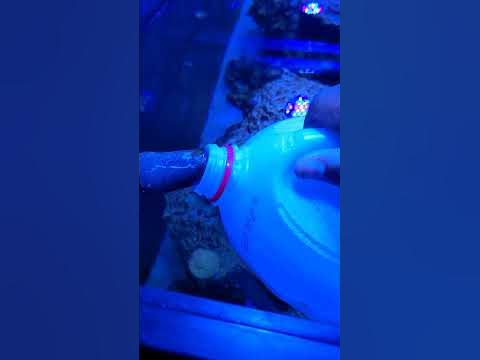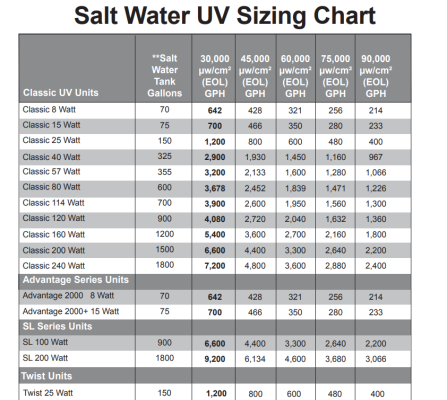The my sump is located in the basement and the DT is located upstairs. The UV is plumb in a manifold off the output of the return pump. The manifold also has a protein skimmer and a gfo/carbon reactor (not running currently) and then the UV.Sorry! I thought I read you had your UV set at 1380 gph. Yeah, 180 is slow, ich larva will have plenty of time to find new hosts before getting pushed through the UV. Running a UV at slower flow rates increases the exposure rate insuring better kill rates. But slower flow rates will give ich larva more time to find hosts. This is one reason it can be confusing and explains why many aquarists have had poor success using UVs for ich. Another variable is where the intake and return are located at. A UV installed in the sump doesn't do a good job of killing larva that are hatching out in the display tank. The setup I've found that gives the best results for dealing with ich in a display tank is to have at least 1 watt of UV for 10 gallons of water, 2-3 turnovers per hour and have a seperate pump lower down behind the aquascaping feeding the UV and have the return at the surface.
here is a quick video (below) of return line (output of the manifold) filling a 1 gallon milk jug. I believe to get gph is 60(sec) X 60(min) / (how many seconds to fill jug). With protein skimmer running i got about 15 seconds. Since im doing only 1 side. To account for the other side i divide 15 seconds in half. which is 7.5 seconds. which give about 480gph going through the UV. correct me if im wrong...





















